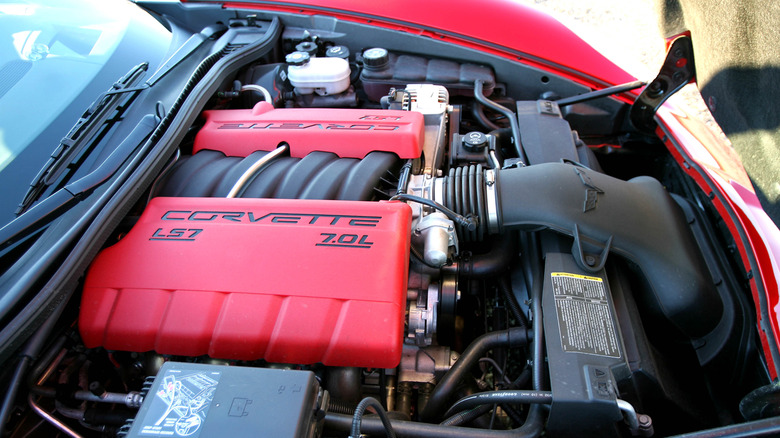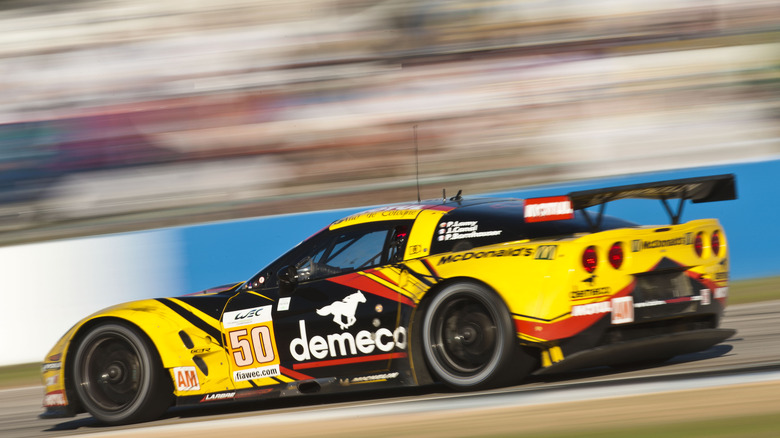Here's What Makes General Motors' LS Engines So Special
Chevrolet's small-block engine family has gained a cult following among die-hard fans and non-GM aficionados since the original Gen 1 V8 debuted in the 1955 Chevrolet and C1 Chevy Corvette. It didn't take long for '60s tuners and hot rodders to notice the Chevy V8's tuning potential, and how it pumped out more horses despite being smaller and weighing less than the competition.
According to Silodrome, Chevy developed its small-block V8 to dethrone the V8 title long-held by Ford and its Y-block V8 engine. The Ford Y-block V8 forever remains the powerplant that first brought V8 power to the masses, but Chevy's small block and the next-gen LS series of engines have ruled the American tuning circle for the past 70 years.
The LS V8 first appeared in 1997 as a third-gen iteration of the original Chevy small block. Next came the LS6 in 1999, which debuted in the C5 Corvette Z06. General Motors unveiled the fourth-gen LS2 in 2004 with the C6 Corvette, followed by the LS4 (Chevy Impala SS and Pontiac Grand Prix GXP), LS7 (C6 Corvette Z06), and LS3 (2008 Corvette C6). Special mention goes to the LS9 as the most powerful GM production engine, debuting in the C6 Corvette ZR1 (per Motor Trend).
More power, less weight
It's not hard to fathom why the Chevy LS V8 is the go-to engine of choice when upgrading or building a project car. Unlike Chrysler and Dodge's iconic HEMI V8, the Chevy LS has a lightweight aluminum engine block, intake manifold, and cylinder heads. The LS V8 is also more compact with its pushrod valvetrain, allowing up to 6.2 liters and 7.0 liters of displacement without taking up too much hood space (per Car Throttle). Less weight on the front of your muscle car is good if sharper handling and better weight distribution are primary concerns.
Moreover, the LS has a ton of nerdy merits that allow it to produce more power and torque. It has a generous cam-to-crank spacing profile to fit longer-throw crankshafts, and it has six-bolt main bearing caps that reinforce the bottom end and enables the motor to pump out colossal power numbers (per Golen).
The LS is also durable, easy to service, reliable, and cheaper to tune. Finally, the market is brimming with OEM replacement and aftermarket tuning parts dedicated to making your LS spin faster and dump out more twists. Its adaptability sums up why the Chevy LS has become a more legendary figure than the vehicles it powered.

